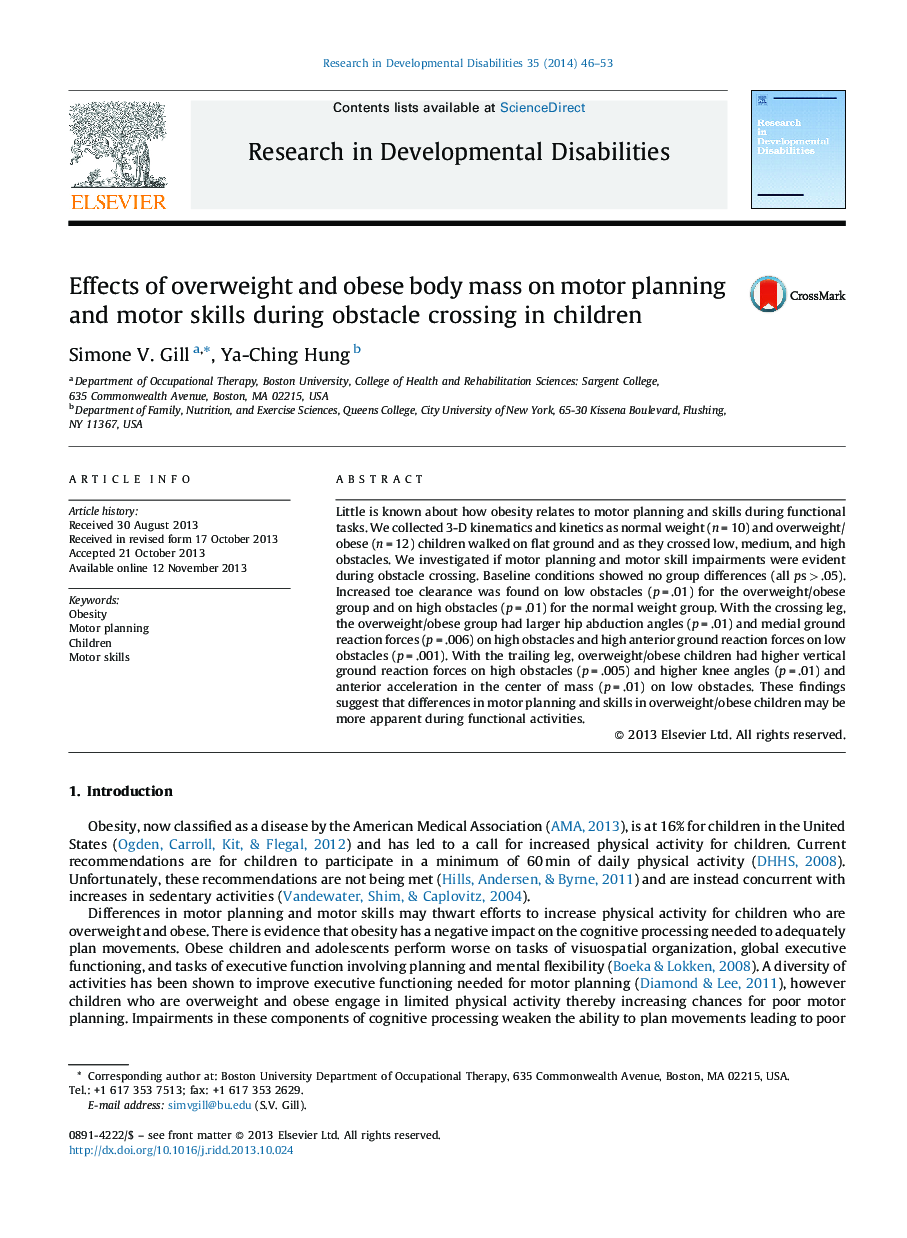| Article ID | Journal | Published Year | Pages | File Type |
|---|---|---|---|---|
| 10317501 | Research in Developmental Disabilities | 2014 | 8 Pages |
Abstract
Little is known about how obesity relates to motor planning and skills during functional tasks. We collected 3-D kinematics and kinetics as normal weight (n = 10) and overweight/obese (n = 12) children walked on flat ground and as they crossed low, medium, and high obstacles. We investigated if motor planning and motor skill impairments were evident during obstacle crossing. Baseline conditions showed no group differences (all ps > .05). Increased toe clearance was found on low obstacles (p = .01) for the overweight/obese group and on high obstacles (p = .01) for the normal weight group. With the crossing leg, the overweight/obese group had larger hip abduction angles (p = .01) and medial ground reaction forces (p = .006) on high obstacles and high anterior ground reaction forces on low obstacles (p = .001). With the trailing leg, overweight/obese children had higher vertical ground reaction forces on high obstacles (p = .005) and higher knee angles (p = .01) and anterior acceleration in the center of mass (p = .01) on low obstacles. These findings suggest that differences in motor planning and skills in overweight/obese children may be more apparent during functional activities.
Related Topics
Life Sciences
Neuroscience
Behavioral Neuroscience
Authors
Simone V. Gill, Ya-Ching Hung,
